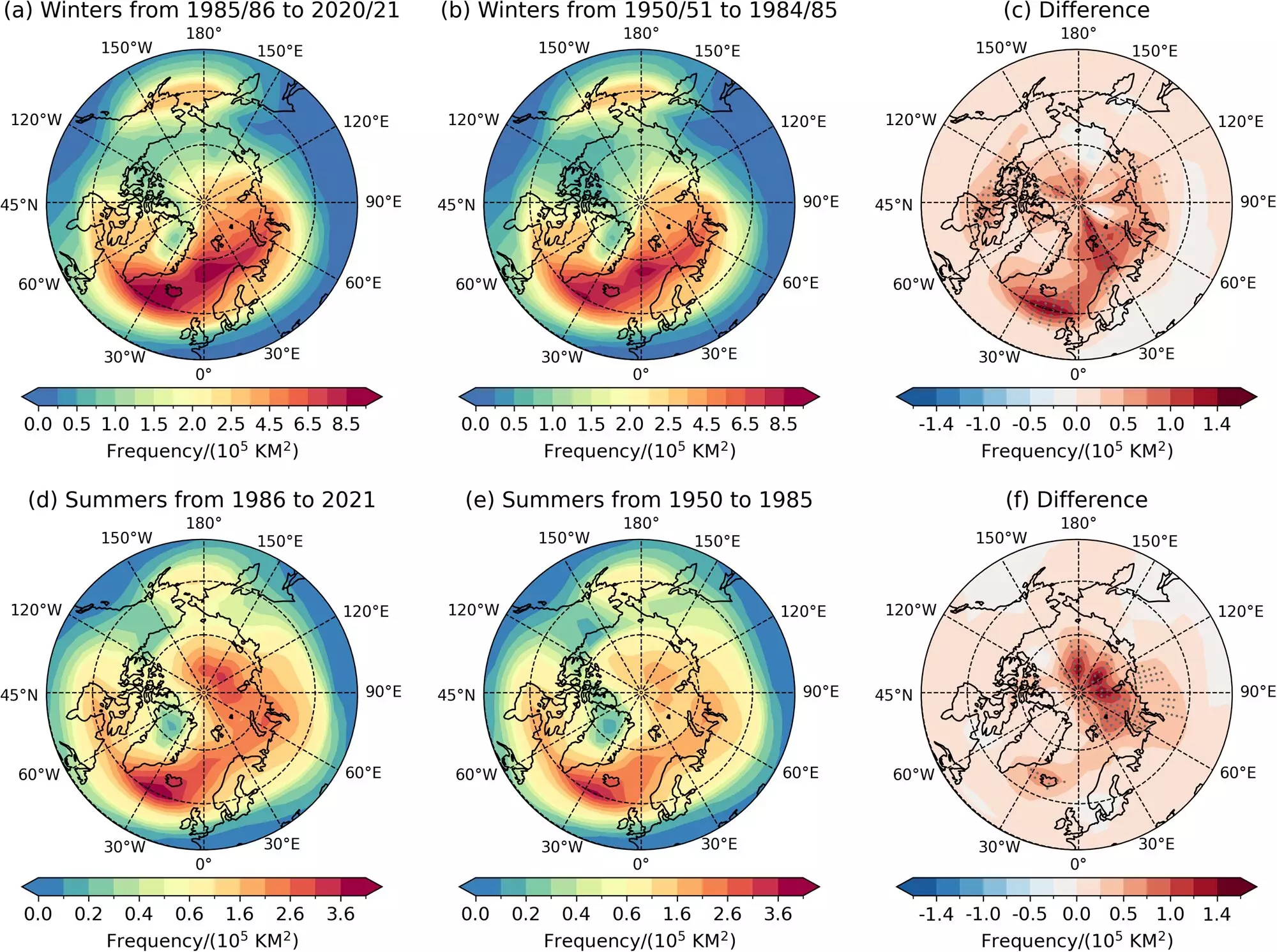The Arctic region has been experiencing alarming changes in recent decades. Earth scientists from North Carolina State University, the University of Alaska Fairbanks, North Carolina A&T State University, and Sandia National Laboratories have conducted research on the Arctic and have discovered that cyclones in the region have become more frequent and stronger. This is of great concern as temperatures in the Arctic are rising at a faster rate than anywhere else on Earth. These rising temperatures have significant implications for the environment, leading to changes such as delayed ice formation and earlier melting each year.
Last year, the Arctic witnessed the most powerful cyclone ever recorded in the region. With wind speeds reaching up to 67mph, this storm caused massive waves that resulted in the breakup of substantial amounts of winter ice. This event prompted the research team to delve deeper into understanding Arctic cyclones and their trends over time.
To gain valuable insights into the frequency and strength of Arctic cyclones, the research team collected and analyzed extensive climate data spanning multiple decades. These datasets, which date back to the 1950s, provided crucial information for their investigations. By comparing cyclones that occurred over the past seventy years, the researchers uncovered significant patterns and trends.
The findings of the research team indicate a clear association between rising temperatures and the formation of cyclones in the Arctic. They observed that cyclones have been steadily increasing in size and intensity, lasting for longer periods as well. Additionally, these extreme weather events have become more frequent over time. The study highlights the important role played by changes in temperature gradients and the jet stream in the development and intensification of Arctic cyclones, particularly during the winter months.
The repercussions of these changing cyclonic patterns are significant. As larger and more powerful cyclones hit the Arctic, they lead to a higher degree of sea ice breakup. This accelerated ice breakup process further hastens climate change in the region. The research team concludes that the increased frequency and strength of cyclones in the Arctic exacerbate the already precarious environmental situation.
The findings of this study demonstrate the urgent need for continued research into Arctic cyclones and their impact on the region’s climate. It is essential to better understand the mechanisms behind these changes and to develop effective strategies to mitigate the damaging effects. Additionally, policymakers must take proactive measures to address the root causes of climate change and work towards sustainable solutions.
The research conducted by the team of Earth scientists uncovers an alarming trend in the Arctic – an increase in the frequency and strength of cyclones. These extreme weather events, driven by rising temperatures and changing climate conditions, have significant implications for sea ice and the overall climate of the Arctic. Urgent action is required to address the consequences of these cyclonic patterns and to work towards a sustainable future for this fragile region.


Leave a Reply